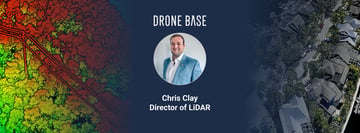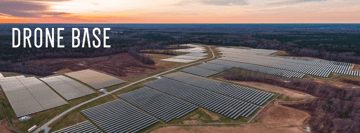Passenger drones have been touted as one way to ease congestion and improve air quality in urban areas. As with electric cars, they produce zero emissions and promise a greener way of getting things and people from A to B.
But that energy has to come from somewhere. Drones could play a major role in cleaning up the planet, and it won’t just be through transforming our transportation systems. The technology also has a role to play in supporting the renewable energy industry.
Solar Farms
Drones are now established tools in agriculture. Besides mapping and the automated spreading of pesticides, they can be used to scout crops from above and assess a farm’s health with a range of sensors and analytics programs.
The renewable energy industry can also benefit from that kind of insight from above, which is why the same technology is becoming commonplace on solar farms.
Equipped with thermal cameras, drones allow inspections to be carried out quickly and at scale. Engineers on the ground can scan solar panels and spot anomalies that might otherwise go undetected or take a long time to discover.
The solar industry has huge promise but suffers from the efficiency drops that come with varying weather conditions, darkness and infrastructure issues. Using aerial insights, solar companies can more easily keep their farms operating at peak potential.
DroneBase recently partnered with FLIR to offer thermal imagery to customers around the world and provide our pilot network with training through the FLIR Infrared Training Center.
The aim is to democratize drone flights with thermal sensors and we expect the solar industry to be a major beneficiary.
Wind Power
Just like solar, wind energy relies on complex infrastructure to be as efficient as possible in order to achieve the best output.
Drones are transforming inspections on wind farms around the world. Wind turbines - both onshore and offshore - are left exposed to the elements as they operate. Even minor damage can cause inefficiencies and wasted energy.
Traditionally inspections have required rope teams to take a closer look at each blade. This process is slow, labor-intensive and not without risk to those involved.
Drones can reduce the time engineers need to spend in precarious positions by providing quick and remote coverage of turbines. The technology is also far cheaper than a manned crew, meaning wind farms can carry out wind turbine drone inspections with greater regularity to keep operations running at 100%. Drones have an important role to play in the future of wind power; DroneBase is set to be a part of that.
Some companies are exploring ways for drones to actively take part in wind turbine maintenance process. Latvian startup Aerones has developed a rugged, tethered platform that can be used to de-ice blades in the winter.
Electricity Generation
The wind and solar industries are seeing the benefits of drone technology today. But there’s another fascinating way that drones could help support a greener future: by generating electricity themselves.
A growing number of companies around the world are exploring how tethered drones and adapted kites could hover at high altitude to harness the full potential of wind power.
Just like solar, wind power is restricted by the inconsistency of weather. Recent statistics from the US Energy Information Administration show that wind power generated five times more electricity in 2018 than in 2008. Yet it still represents just 4% of the world's electricity supply. The consistent, high-speed wind at altitude could quite literally take the concept to new heights. The challenge is to develop technology that can tap into it.
Swiss startup Skypull and Google’s Makani are working on flying turbines and a huge tethered kite respectively. There is plenty of renewable power up there. Drones could be the way it’s captured in the future.
These are just some of the weird and wonderful ways drones are solving problems around the world. You can read more about some of our favorite Drones for Good examples here.





